Charger Xtar MC2
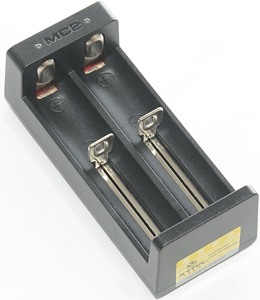

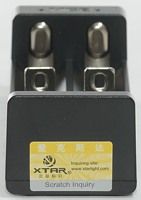
This is Xtar's smallest line of chargers Single 10440, 16340,14500 or single up to 26650 cell and now dual 18650. The charger can be powered from usb, but this model did also include a mains adapter.


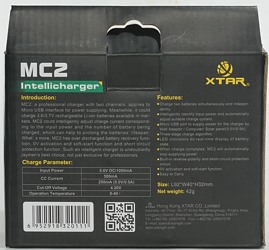

The cardboard box lists lot of specifications, battery types and features.
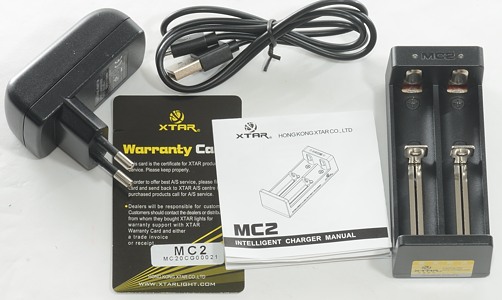
The box contains the charger, a usb power supply, a usb cable, manual and a warranty card.
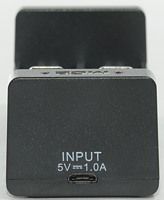
The charger has a micro usb power connector.
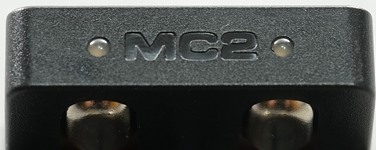
The charger has a red/green led for each slot.
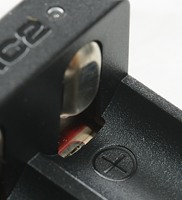
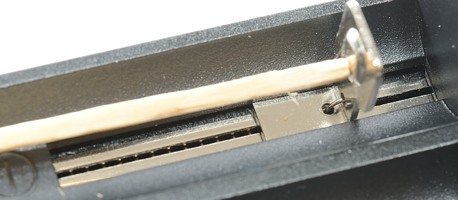
The slots uses the usual construction and works well. They can handle batteries from 31mm to 71.4 mm long.








The charger can only handle one 26xxx battery at a time.
The charger can easily handle 70 mm long batteries, inclusive flat top cells.
Measurements
- Discharges with less than 0.001mA when not connected to power
- Charges with less than 0.005mA when LiIon battery is full.
- Will restart if battery voltage drops below 4.12 volt.
- Below 2.85 volt the charger will charge with about 70mA
- Above 2.85 volt it will apply regular charge current.
- Charge will restart charging after power loss, but not on battery insertion.
- Charger will reduce charge current when usb voltage is below 4.7 volt.
%20%231.png)
The charge curve is mostly a CC/CV curve. It looks like the charger has two parallel circuit for a battery.
%20%232.png)
Slot #2 works the same way.
But on this channel the circuit that is connected to the led reports done before the other circuit is done charging. This means the charger may report finished premature (Only a few percent capacity). This problem will depend on the actual chips mounted in the charger, i.e. it will be random if you get one that works correctly or not).
%20%231.png)
%20%231.png)
Different capacity gives different charge time.
%20%231.png)
There is no problems with my old 16340 cell.
%20%231.png)
%20%231.png)
The two other smaller cells is also charged without problems.
.png)
Doing two cells at a time is no problem.
.png)
But that will increase the usb current to 1A.
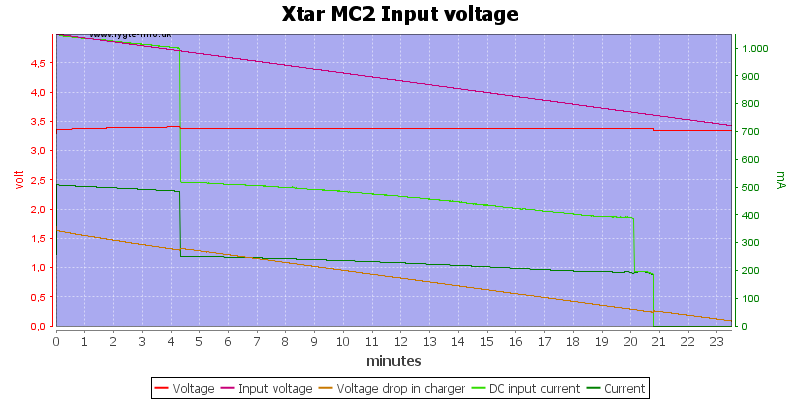
Xtar says that the charger will automatic adjust charge current, depending on the power supply. This is done with a voltage sense, i.e. when the voltage drops the charger reduces the current.
Here I connected the charger to voltage that is slowly ramping down, just after 4 minutes the input voltage goes below 4.7 volt and the charger reduces the charge current.
.png)
To test the automatic reduction in charge current I added a 0.4 ohm resistor in series with my power supply.
The charger reduced the current for most of the charge time. Because I was testing with 3100mAh batteries, the charge time was very long.
Normal charge current is 500mA for each battery, but here it is reduced to 250mA due to the low voltage.

M1: 43,4°C, M2: 42,7°C, M3: 50,1°C, HS1: 54,6°C
The charge chips does get warm and in this compact charger they will heat both the batteries and the usb connector.
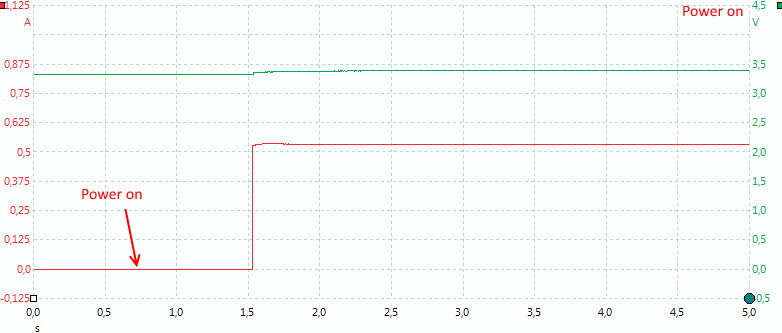
The scope trace is rather boring to look on with a linear charge regulator.
USB power supply
I decided to do a simple test of the supplied usb power supply.
- Idle power is 0.07 watt.
- When overloaded the output voltage will drop, then turn off.
- Output is coded as USB charger (DCP)
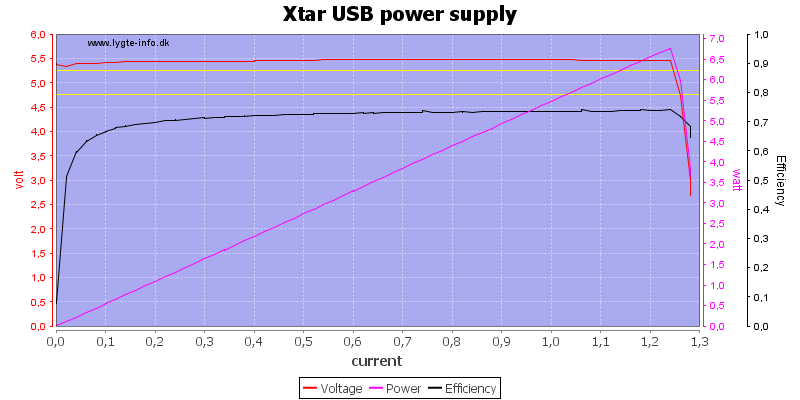
The output voltage is a bit too high, it makes it possible for the charger to maintain a slightly higher current in the last part of the CC charge, but in the first part of the CC, it generates more heat.
Testing the mains input with 2500 volt and 5000 volt between mains and low volt side, did not show any safety problems.
Conclusion
The charger can handle many sizes of LiIon, but some patience may be required (This is the case with all chargers without current selection and support for many sizes).
Like the other MC chargers there is the problem that the charger may report done to early and you will not know if your charger does it (Checking with a usb voltmeter will reveal it).
Notes
The charger was supplied by a Xtar for review.
Here is an explanation on how I did the above charge curves: How do I test a charger




















%20%231.png)
%20%232.png)
%20%231.png)
%20%231.png)
%20%231.png)
%20%231.png)
%20%231.png)
.png)
.png)

.png)


